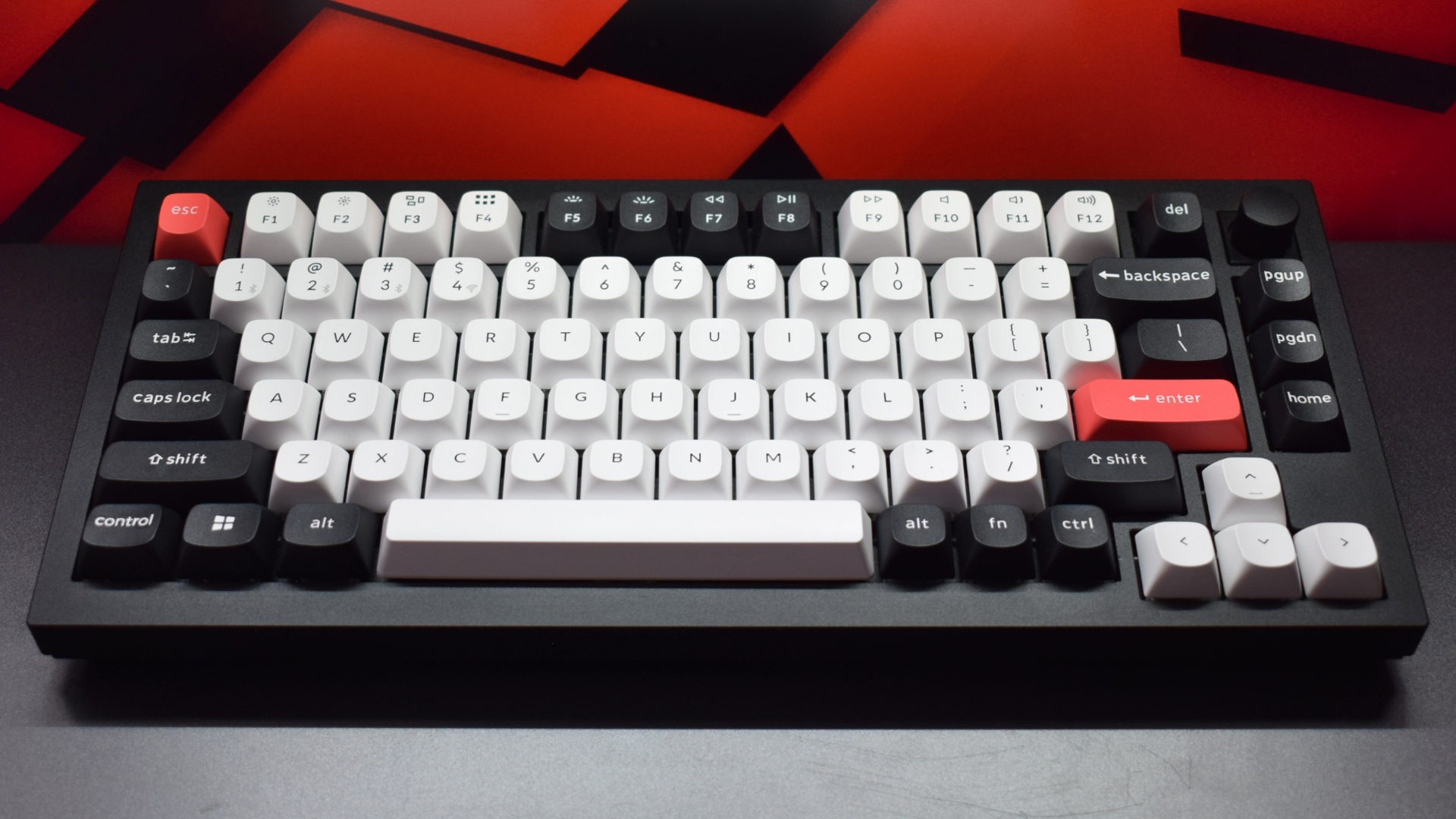
Keychron is a name held in high regard and one of the most respected mechanical keyboard manufacturers. Some of their keyboards are legendary, and you’ll see them adorn the desks of many mechanical keyboard enthusiasts.
While there’s no definitive list of what a keyboard has to get right to be considered great, there’s one company that seems to routinely nail down that which cannot be nailed down: Keychron. So, given the opportunity to review their latest Q1 HE wireless keyboard, how could I say no?
Outfitted with Hall Effect switches, which use magnets to determine the precise position of a switch throughout actuation, the Q1 HE promised to be a highly accurate and friction-free foray into Keychron’s keyboard excellence. While there are a few bumps in the road ahead, it ultimately didn’t disappoint. Let’s find out why.
Keychron Q1 HE wireless keyboard: Price and availability
The Keychron Q1 HE is available fully assembled or in barebone form from the Keychron website for $219 or $199.
The fully assembled keyboard is available in carbon black or shell white, with white/black/red and white/mint keycaps, respectively. Both variants feature Gateron Double-Rail Magnetic Nebula Switches with adjustable actuation points.
In the box, you’ll find the regular array of Keychron/Lemokey goodies, including:
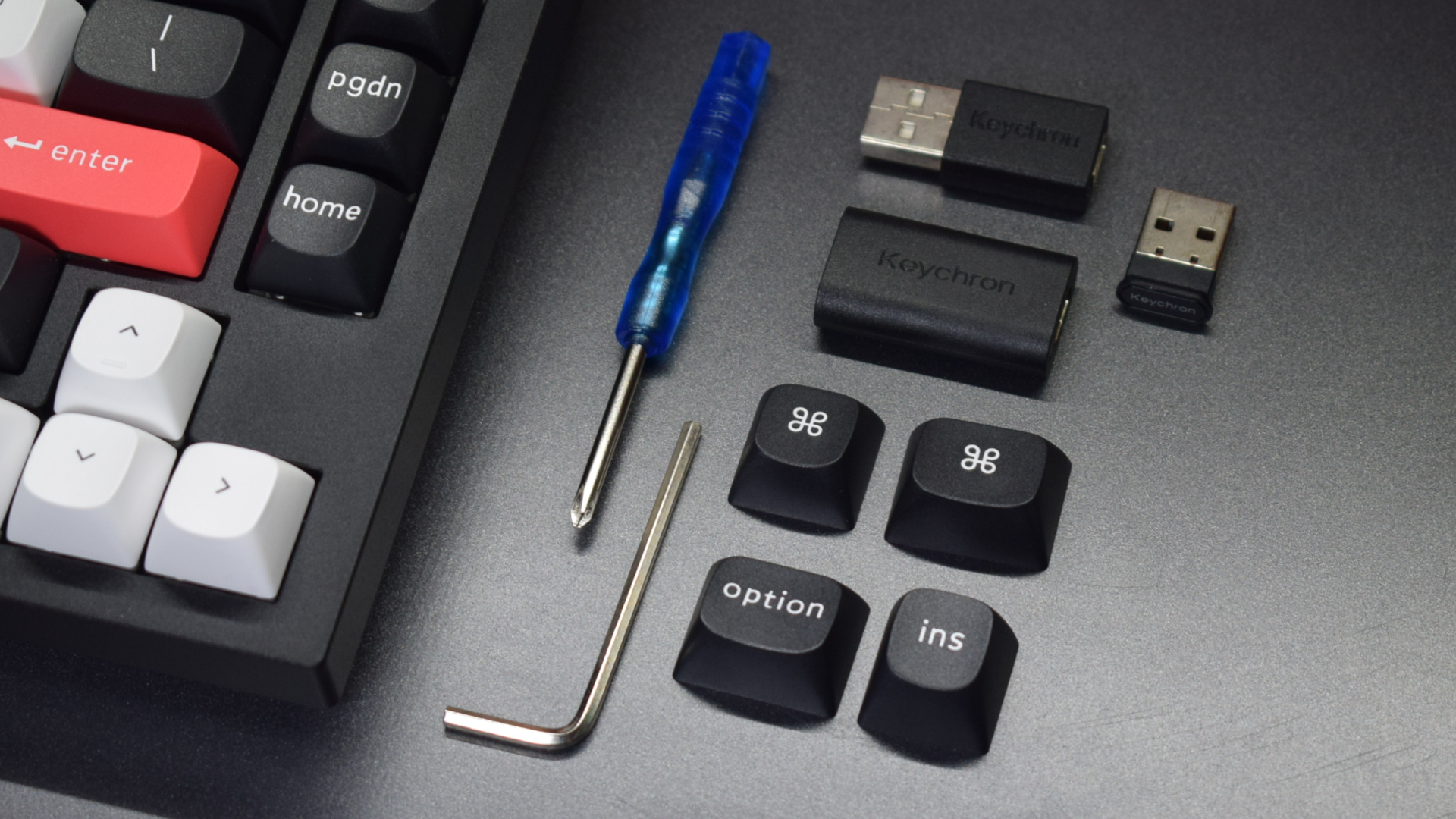
- Braided USB-C/USB-C cable (6-foot, 1.8m)
- 2.4GHz wireless dongle
- 1 x USB-C/USB-A adapter (female-to-male)
- 1 x USB-C/USB-A adapter (female-to-female)
- Alternate keycaps for Mac owners
- Replacement screws and stabilizers
- And an assortment of tools for maintenance and customization
(keycap/switch pullers, Allen key, and screwdriver)
Interestingly, the Keychron Q1 HE is visually identical to the much more affordable $129 Lemokey P1 Pro. However, that keyboard features non-hall effect Super Red/Brown/Banana switches.
Internally, the difference is far more apparent with the Keychron adopting a flexible double-gasket design that vastly reduces acoustic resonance over the P1 Pro’s firmer gasket mount offering.
While both are hot-swappable, only the Lemokey P1 Pro is ready to accept any 3 or 5-pin MX-style switches. The Keychron Q1 HE is limited to Gateron Double-Rail Magnetic switches, meaning only Dawn (30/50gf), Nebula (40/60gf), and Aurora (50/70gf) switches can be installed.
In a nutshell, if you’re a fan of building up and tearing down your keyboards, the Lemokey will save you money and headaches in the long run. However, if you’re all about fine-tuning your keyboard of choice until it suits your signature style, it’s the Keychron you’re looking for.
Keychron Q1 HE wireless keyboard: Design
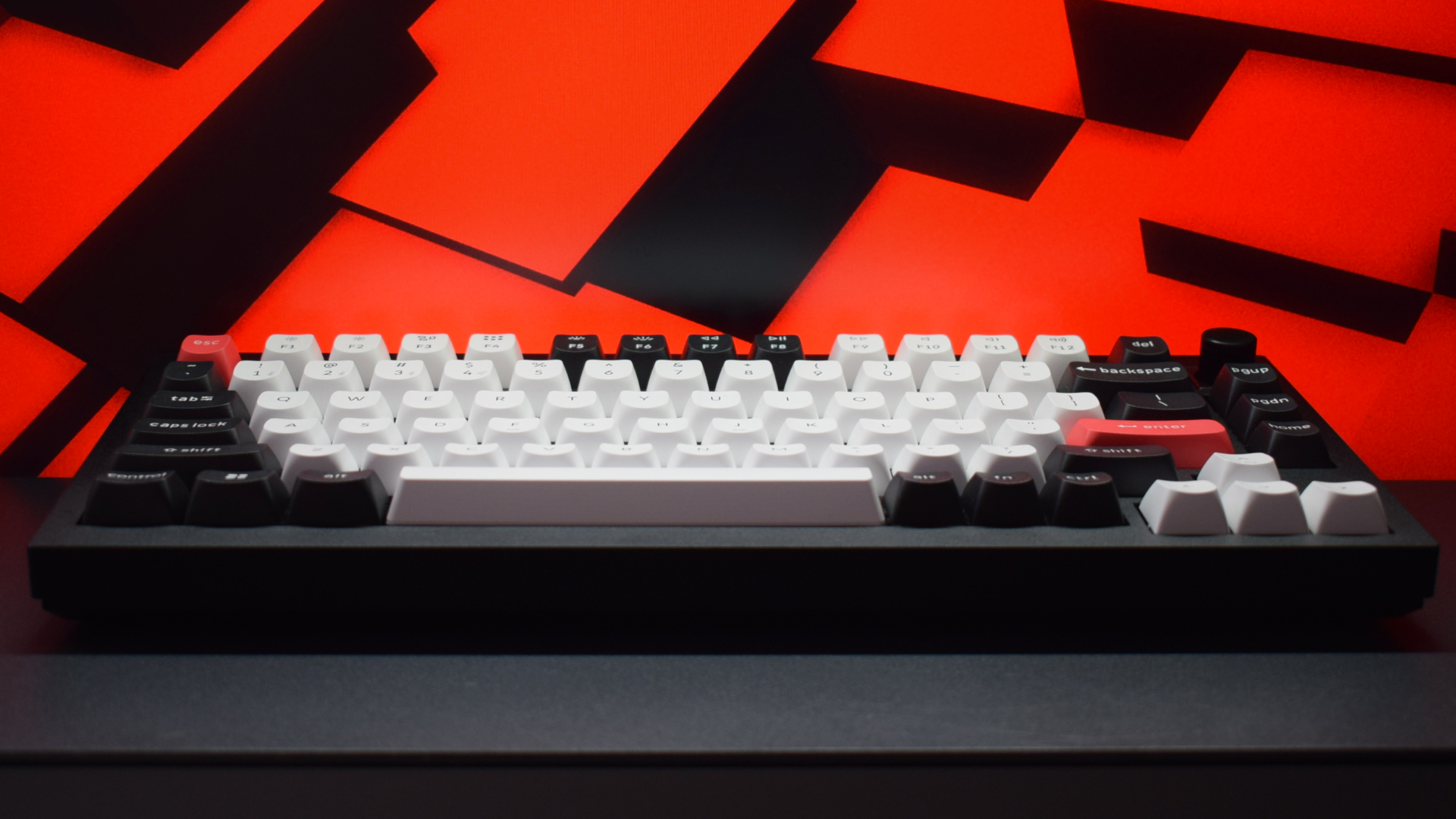
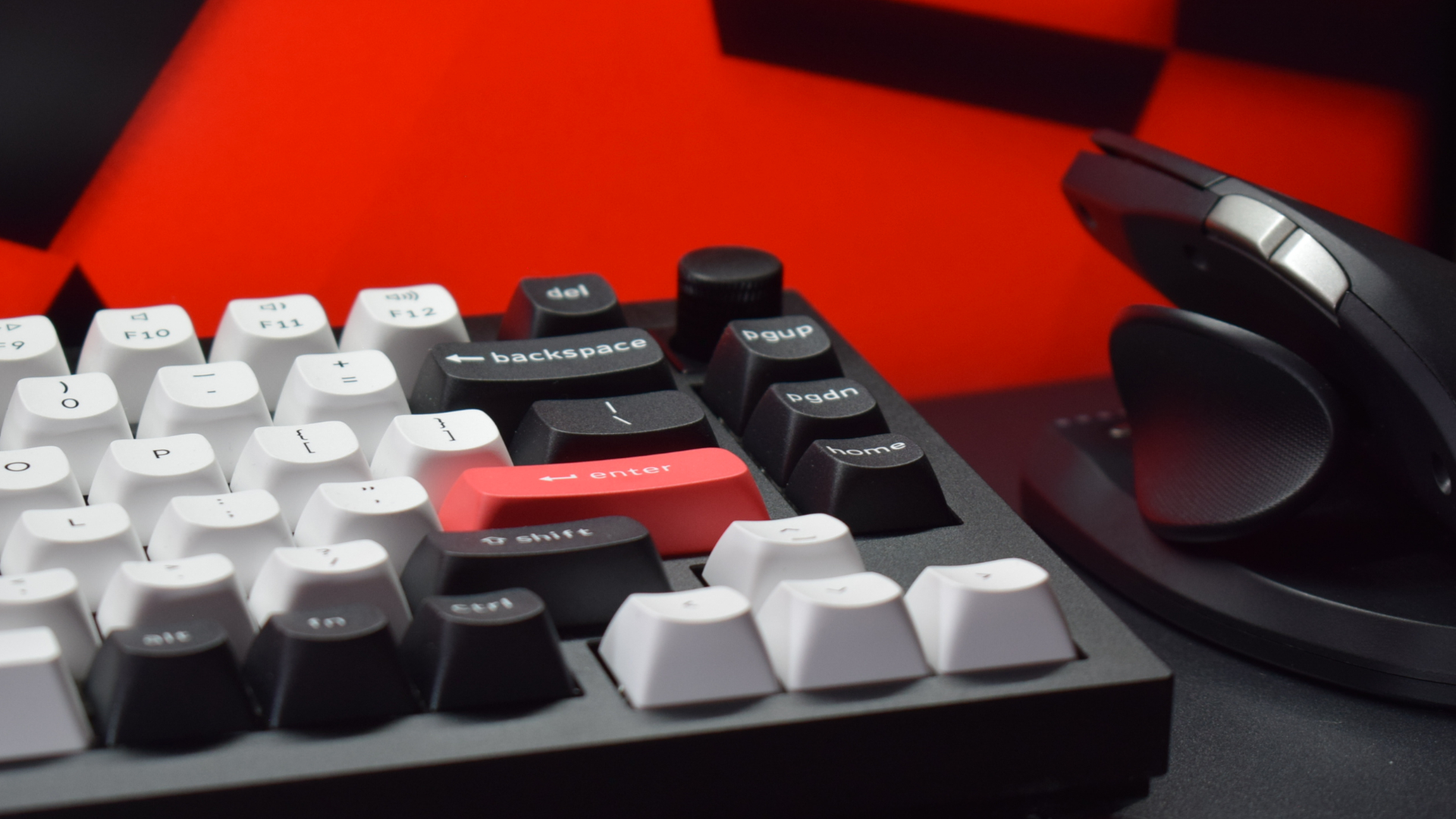
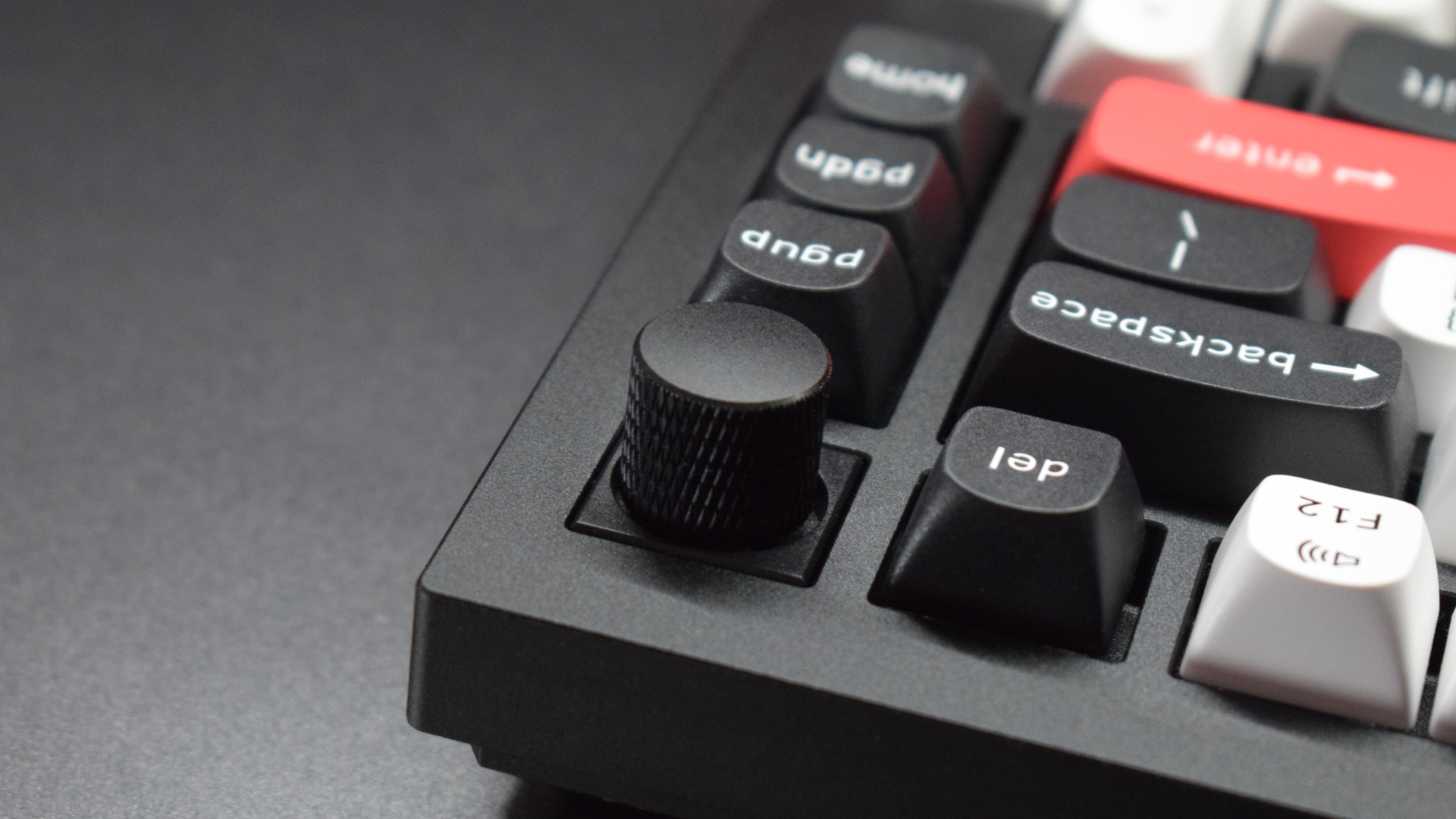
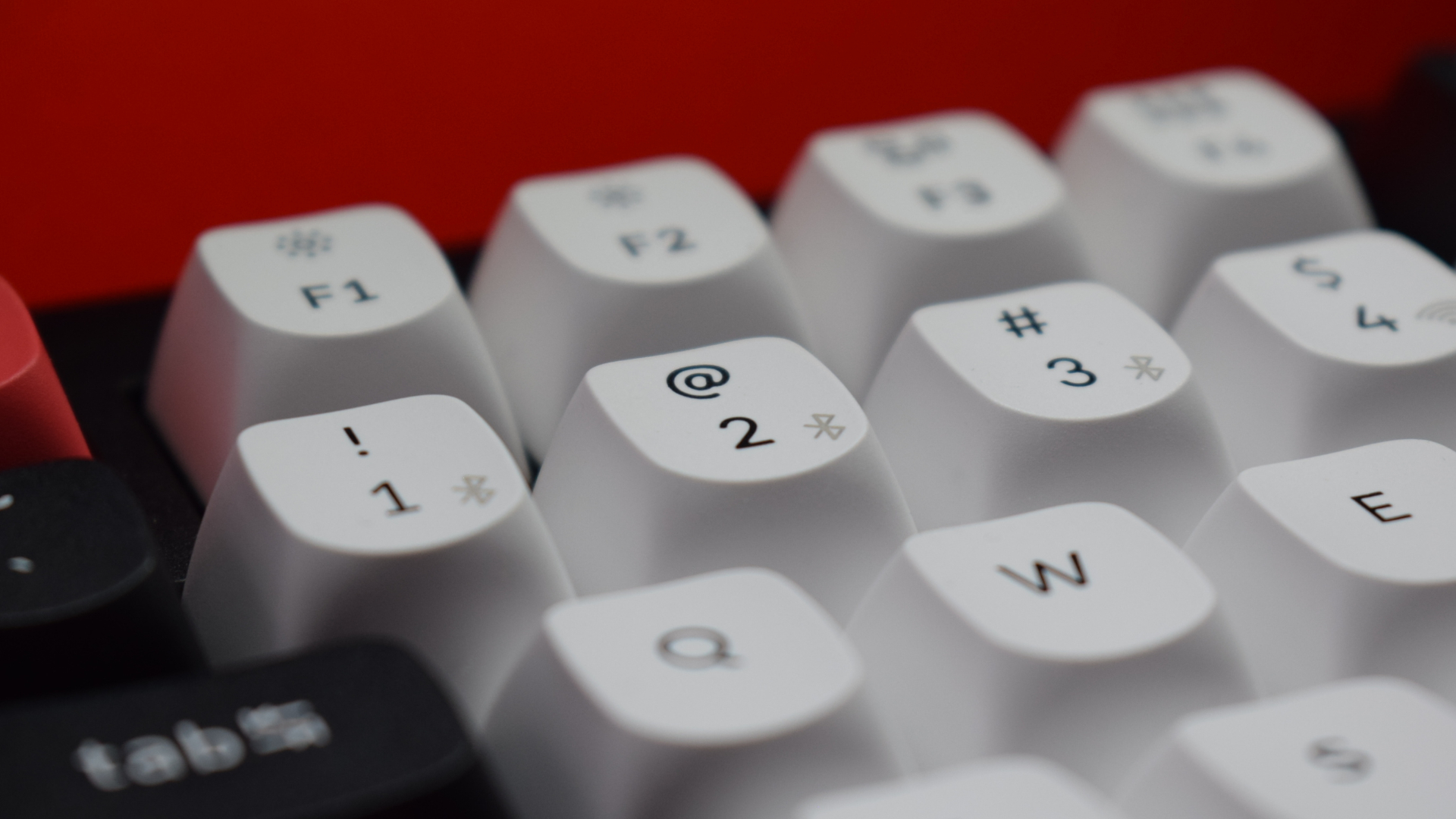
Taking the Keychron Q1 HE out of its box immediately reveals its stellar build quality. The solid aluminum chassis may catch you off guard with its 3.8 pound weight, but that heft only reassured me that the Q1 retains Keychron’s top-tier durability.
It’s heavy, but also nicely compact, measuring 12.9 x 5.7 inches and reaching ~1.5-2 inches in height, depending on your choice of keys. The deck features 81 keys with a single aluminum rotary dial and is pitched at a 5.2-degree angle, which offers some decent ergonomic support, but there’s no additional adjustment in posture to be found as the Q1 HE doesn’t have any additional feet (and with this weight, I’m not surprised why).
As you’d expect from a Keychron keyboard, the Q1 HE is fantastic in its crisp and minimal design. Everything from the cool touch of its frame to the curling sharp edges of its OSA PBT keycaps with their striking colors comes together to form a seriously chic-looking clavier.
This is the carbon black model, and I’ve been using it for a few weeks now as I get familiar with the Gateron Double-Rail Magnetic Nebula Switches housed within. After this much time, I can safely say that the experience is frankly incredible, with Gateron’s switches offering an incredibly smooth typing experience with stunning semi-silent acoustics that sound like raindrops pelting across a worn wooden roof.
The sound of each keystroke retains just enough of a bassy thock to contrast against their striking clacks, though muted and softened from a sharpness, aided by the Q1 HE’s excellent double-gasket design and sound-absorbing padding.
It’s one of those background noises that compels you into typing at a rhythm and a pace, which ultimately showed when my 10fastfingers.com result took my 78 words per minute average typing speed and routinely pumped it up to a mid-to-high 80s score.
My only complaint about the Keychron Q1 HE’s looks comes from its RGB backlighting. While it's a welcome addition, it simply doesn’t beak through from the edges of the OSA keycaps enough and gets lost in the background. A change of keycaps helps to bring this out fully, but the fresh-out-of-the-box experience doesn’t do enough to flaunt them.
Keychron Q1 HE wireless keyboard: Connectivity and battery
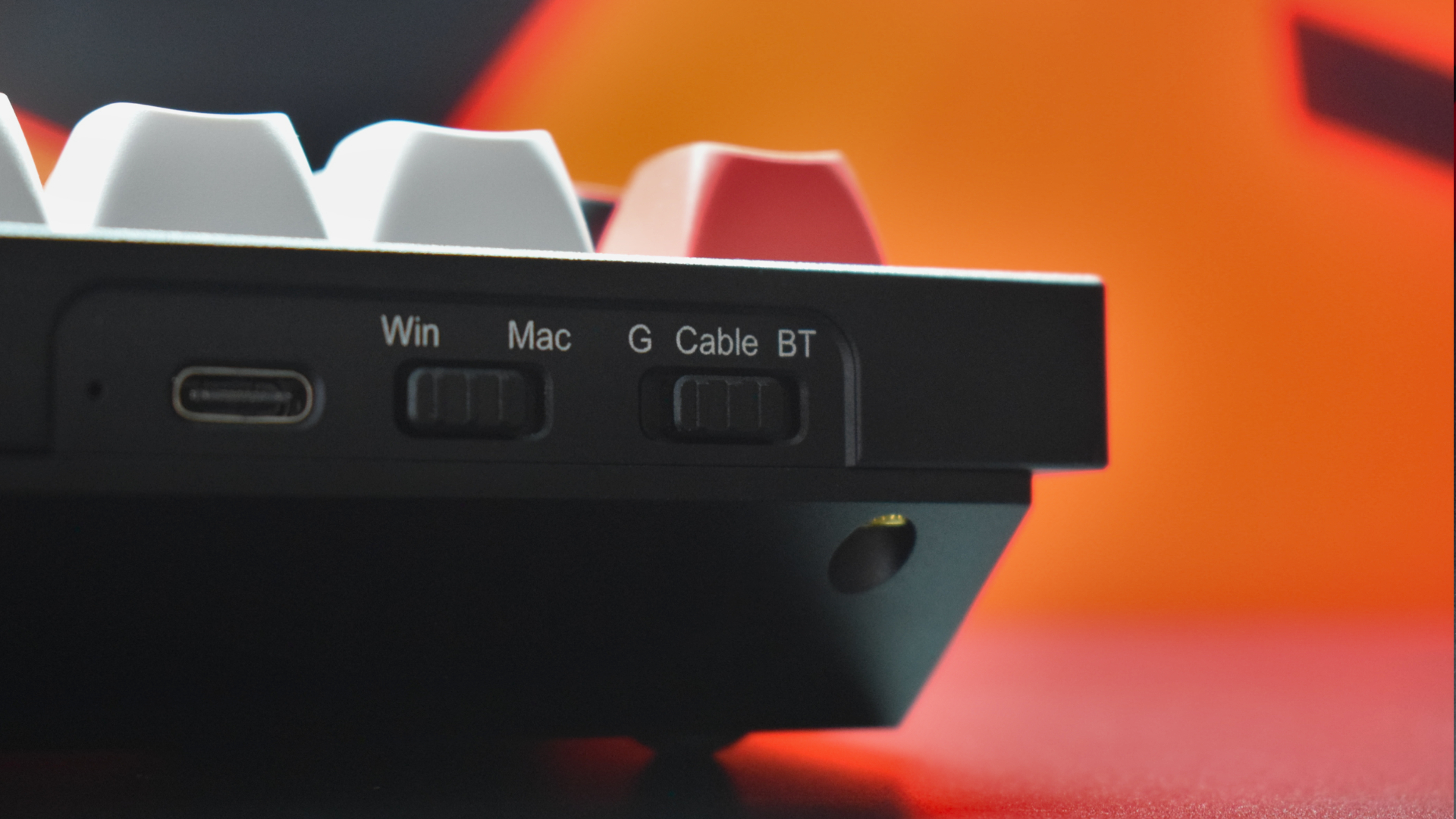
The Keychron Q1 HE offers three methods of connectivity: wired via USB-C, Bluetooth 5.1, and 2.4GHz wireless via dongle. Changing modes is as easy as slipping the switch at the rear of the keyboard, and you can hot-swap between three connected devices over Bluetooth by pressing the function key and the numbers 1, 2, or 3 at any time.
If you want the most ultra-responsive experience, you’ll need to use a wired or 2.4GHz connection, which offers a polling rate of 1KHz, whereas you’ll be limited to only 90Hz over Bluetooth.
The Keychron Q1 HE features a 4000 mAh rechargeable lithium polymer battery that the company rates for more than 100 hours of life with the backlighting off.
This high estimate is likely due to an aggressive standby mode that the keyboard will enter after short periods of inactivity. If you want to wake it, you’ll need to be equally aggressive, as a single tap or nudge to a key won’t do it, to save you from accidentally waking it from a knock.
With my daily use of the Q1 HE, I’d say that Keychron wasn’t too far off in its estimations. I’ve only needed to plug it in to charge once in the last week.
Keychron Q1 HE wireless keyboard: Software
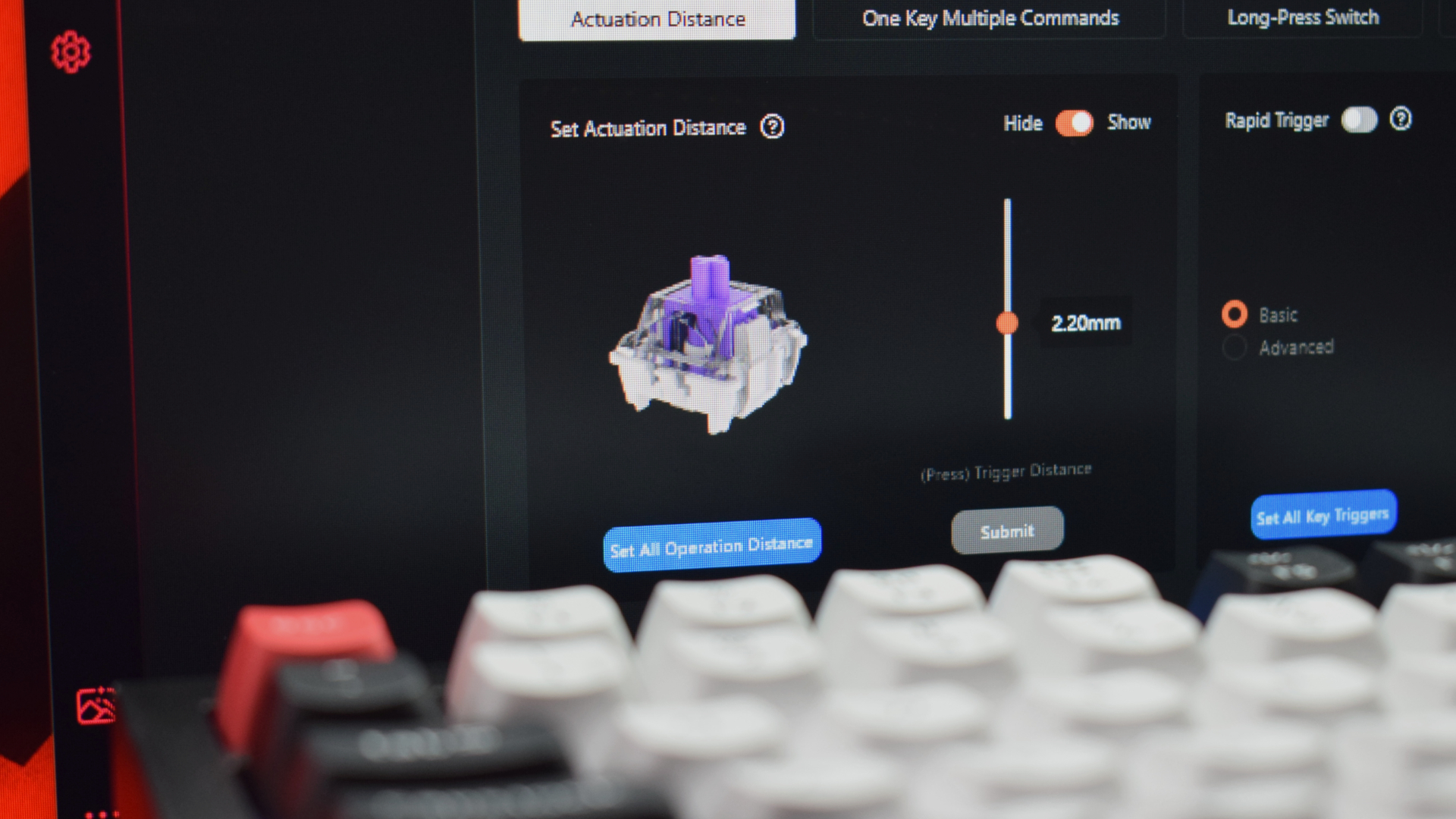
Keychron has gone the extra mile with this release, providing proprietary browser-based software in the Keychron Launcher for the onboard customization of its Q1 HE wireless keyboard as opposed to relying on generic options like VIA.
Within Keychron Launcher you can set up macros and make adjustments to the backlighting as you would in most apps of this kind. However, it's the HE Mode options that stand out, allowing you to manually adjust how much depression it takes before keys actuate and fire.
This gives you complete control over the sensitivity of each keystroke. This allows you to require a fuller keypress before a stroke is registered if you want to avoid any ghost inputs, or shallower presses to actuate keys if you want fast and fleeing movement that stalls as little as possible on each key.
You can even map gamepad controls to the keyboard or allow a single keypress to activate multiple commands like smaller macros. Except these are triggered by how far down you press or release a key.
However, it would be nice if setting up these features was a little better signposted, as much of my successes with Keychron Launcher felt like dumb luck and guesswork more than anything else.
Bottom line

While the Keychron Q1 HE isn’t perfect, the biggest hurdle many will have to clear will be its premium pricing. There’s no denying that this mechanical keyboard is an experience to type on. It’s one of the smoothest keyboards I’ve had the pleasure to test, and its incredible quality shines through in almost every regard.
Mechanical keyboards aren’t niche computing components these days, but the ones that highly promote customization play to a crowd of enthusiasts. The ability to fine-tune and hot-swap to your heart’s content amplifies the price of keyboards like this.
However, the Q1 HE’s innovations almost shoot themselves in the foot, hampering those who want to make regular changes to their deck by limiting which switches will fit. It risks narrowing the appeal to a minuscule audience.
While the Q1 HE’s actuation points can be adjusted, it places an overall cap on how far the customization can go, even if the magnetic switches offer unique customization themselves.
All that said, this is still a phenomenal compact mechanical keyboard and a joy to use. Its per-key customization is wildly innovative, if a little confusing to come to grips with. But there are all the tools here to fine-tune an exceptionally personalized keyboard, and to some, that matters far more than a limited palette of switches to choose from.







